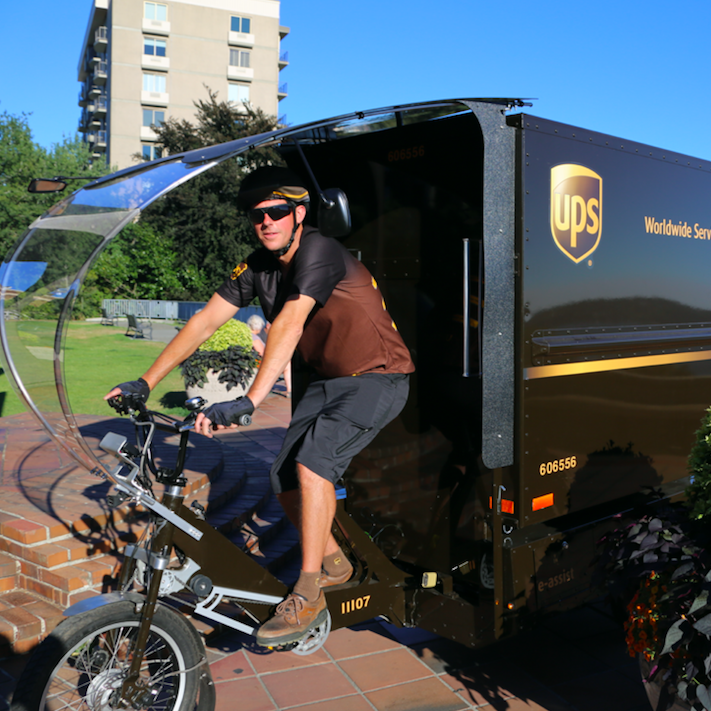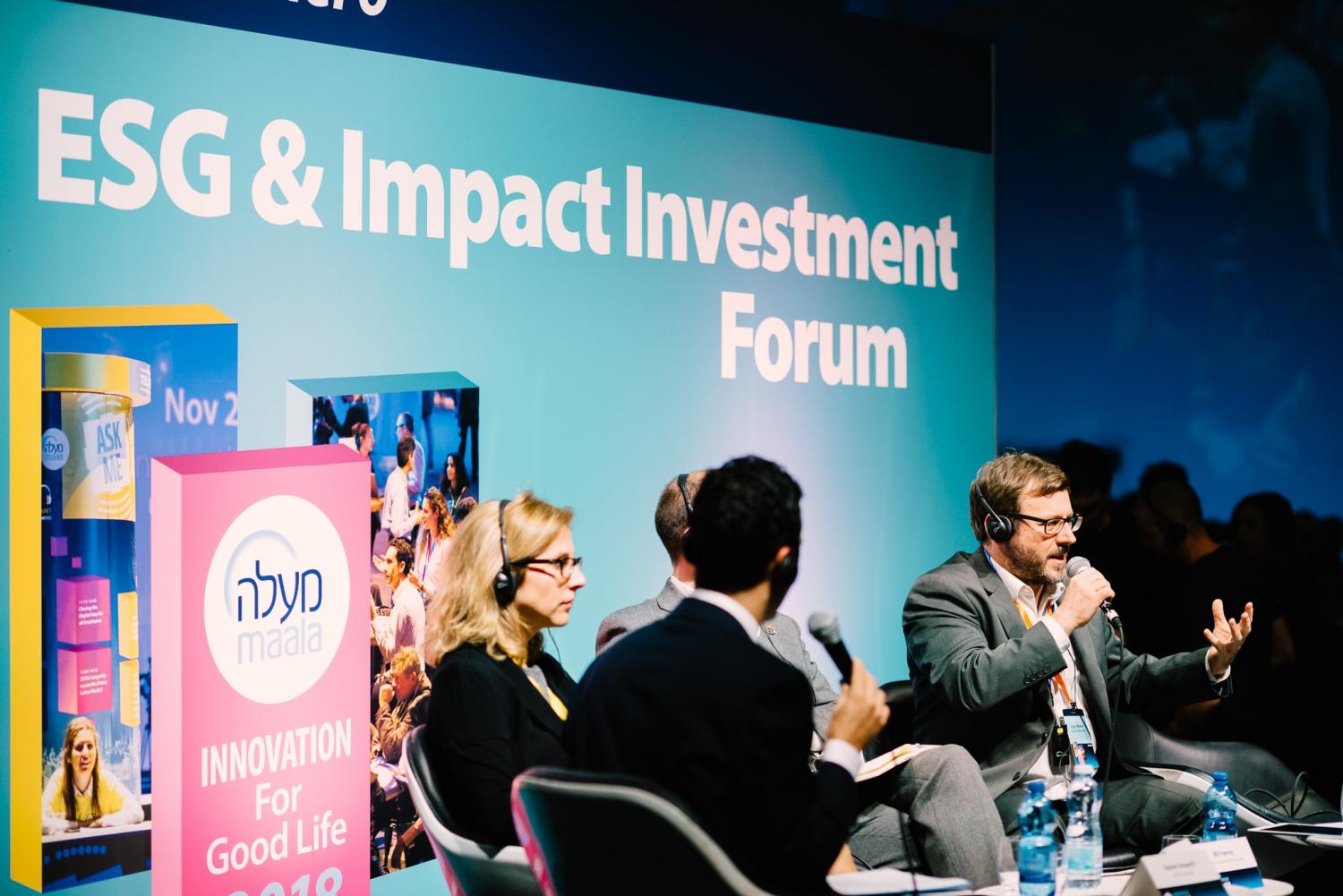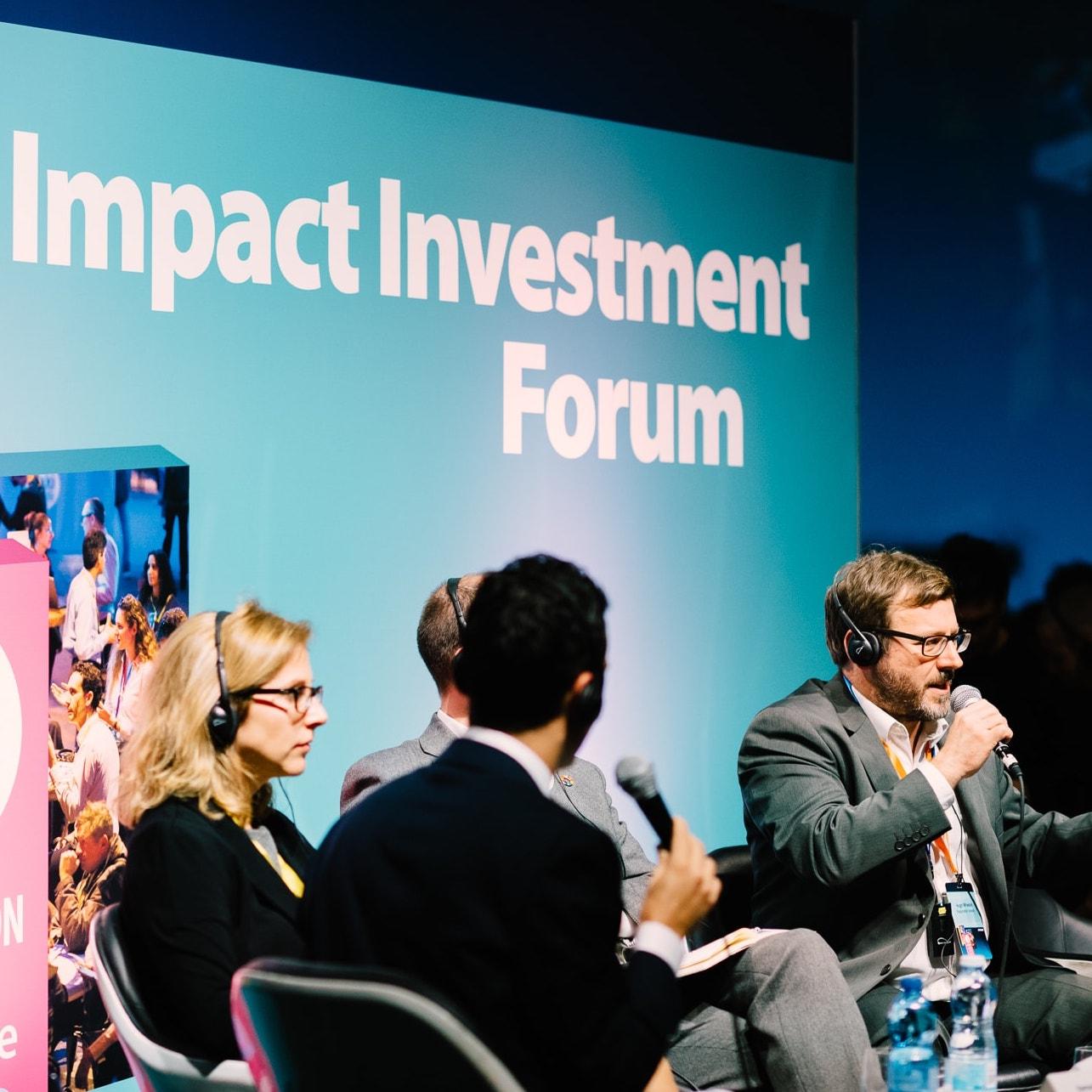This Partnership Created 10 Years of Impact in Dominican Republic


One of Latin America's real estate giants, Cisneros, discusses its partnership with one foundation to boost social impact and investment in Miches, Dominican Republic, home of one of the company's tourist resorts.
From its origins dating back to 1929, Cisneros has evolved into a global enterprise focused on media and entertainment, digital advertising, and real estate. In lockstep with Cisneros’ growth is the company’s vision for sustainable development and our determination to identify opportunities for social impact in the communities where we operate.
One example is Fundación Tropicalia (Tropicalia Foundation), a nonprofit organization that promotes the socioeconomic and environmental development of Miches, Dominican Republic, where we strive to position this community as a sustainable tourism destination. The Foundation was established in 2008 by Tropicalia, a sustainable tourism and real estate development of Cisneros Real Estate located in the northeastern coast of the country on Samaná Bay.
Describing what the Foundation does is easy, but turning words into action has been a challenging and fulfilling professional and personal journey for everyone on our team. Some of us relocated to the Dominican Republic and others moved to Miches, a town home to about 21,000 people. Living side by side with the destination, the people and the country has provided a unique space to build relationships with persevering and admirable people, all of whom have inspired us to give our very best every day.
When we arrived in Miches in 2008, I remember introducing our programs to the community in one of our first open-house meetings; we let people know that we were bringing education and culture programs to public schools in partnership with Fundación Cisneros, that we had been doing this for years throughout the region and now we were in Miches. A woman stood up and asked us: “That’s great, but other than education and culture, what else are you offering?” I was taken aback and understood that we failed at communicating properly the value of our programs, but more importantly this question raised the poignant point that Miches had many more needs, being one of the poorest and historically isolated settlements in the country at that time. Though we felt overwhelmed with responsibility, the path forward became clearer as we began thinking about a comprehensive and participative approach to community development.
Ten years later, and with the tireless work of our passionate team, I can confidently answer that woman’s question, not with ideas but with tangible, measured and participative actions that have supported the development of her community. Over the course of these years, major investments have been made in the region, not just by us with Cisneros Real Estate, but by our partners and the government as well, bringing significant improvement to school, road and telecommunications infrastructure among other indicators of growth.
Our work began in 2008, learning from one of our oldest partners, Banco Popular Dominicano’s Rural School Renovation Program. We studied the methodology of the program, involved the community and adapted it to the local reality; this is how we launched Fundación Tropicalia’s School Renovation and Maintenance Program (PRyME). PRyME was such an important program (and still is), because we learned that every school is a focal point for rural communities, where parents, teachers and children gather not only for education but for all kinds of community events and meetings. Through PRyME we gained a deeper understanding of local needs, and built genuine and strong relationships with school and community leaders, ultimately instilling in us a profound empathy for the people supported by our programs.
Having empathy, developing local knowledge and living side-by-side with your stakeholders are key factors when designing and implementing programs that create value and stay relevant for the community, program beneficiaries, Miches as a tourist destination and even the Foundation. Subsequent programs were developed, including: teacher training, scholarships and complementary school education; beach rescue and environmental studies; training for small business owners and farmers; and several sociocultural and gender equality initiatives.
Our initial strategic partners, such as Fondesa, Universidad Abierta para Adultos, ISA University, INDOTEL, Artemiches, MINERD, CONATURA and many others, helped us lay the groundwork for a varied, complex and challenging work structure that has been nothing short of fulfilling. Through these partnerships we were able to build a portfolio of programs and experiences that would later attract donor funds and/or technical assistance from the likes of USAID; various U.N. agencies including U.N. Women and U.N. Population Fund; IDB Lab (formerly known as the Multilateral Investment Fund) of the Inter-American Investment Bank (IDB); and IDB and IFC Advisory Services.
We began communicating and organizing our programs under the three pillars of sustainability – social, environmental, and economic. Yet we soon realized sustainability is transversal, and so we restructured our program areas into four overarching themes that guide our work to this day: environment, productivity, education and sociocultural advocacy. We started with one employee, and then grew to a team of seven, supported by tens of facilitators and consultants and hundreds of volunteers. This has been a journey of continuous learning, where successes and failures go hand-in-hand, and the latter puts us to the test. Ever the optimists, we never lost sight of our mission and commitment to support the sustainable development of Miches as a tourist destination.
In these 10 years, we’ve been recognized by United Nations World Tourism Organization as one of the most innovative NGOs in terms of sustainable tourism, we’ve launched more than 30 initiatives for community development, eight of which are permanent programs, and have impacted nearly 10,000 participants.
Beyond the numbers, what most drives us are the stories of a family, of a child, of a teacher with whom we interact. In particular, the stories of our scholarship students, who have seized an opportunity to continue on to higher education, many have graduated as agricultural engineers and successfully joined the workforce, effectively disrupting their family’s generational cycle of poverty.

To commemorate our 10th anniversary, we designed a logo inspired in mosaics (pictured above). Much like an impressionist painting, when looking at it up close all you see is a brush stroke or a color; you can’t see the entire image. Rather, you have to step back from the work to understand that many small shapes pieced together makeup a great image. We feel that the road to sustainable development is similar; it takes many actions from many people over many years to build a balanced, unified vision for a place. Over the next 10 years, we will continue building and contributing to that great mosaic.
How UPS Plans to Deliver a Low-Carbon Future

As UPS adds more hybrid and electric vehicles - and even bicycles - to what's becoming more of a low-carbon fleet, the rattle of the engine you hear as trucks pull up to your house with that coveted package could soon become a thing of the past.
Everyone is familiar with the sound of the UPS delivery truck, the rattle of its engine as it comes around a corner and, of course, the squeal of the brakes as it pulls up in front of your house. But that sound might become a thing of the past—and quite possibly sooner than you think.
As Michael Holder of BusinessGreen recently reported, the logistics giant is considering major changes in its equipment strategy going forward—including, in the words of UPS European director for sustainability Peter Harris, "How do we go beyond the diesel truck?"
As more and more of the world's economy is moving online, commercial heavy lifting has literally fallen onto the shoulders of delivery companies. Therefore, it’s up to them to find ways to facilitate this surge in deliveries more sustainably and affordably, for both their own and the planet's survival.
UPS, which currently operates 110,000 vehicles, is aiming to devote a quarter of its ground vehicle purchases to alternative-fuel or advanced-technology vehicles by 2020. The company is also looking to source 40 percent of the fuel for its ground fleet from alternative sources by 2025. That could have quite an impact on the direction of the market, which still seems to be up for grabs between various low-carbon options.
The logistics giant has been experimenting with and evaluating these technologies for some time now, but as it approaches the point of truly massive investment, the company has to be reassured that all of these pieces are going to work together.
Harris laid out a three-pronged strategy, corresponding to the long-haul, local distribution and last-mile portions of the business.
The big trucks that run the long-haul route are called heavy goods vehicles, or HGVs, in Europe. Harris says that UPS is looking, at least for the near-term, at liquefied natural gas as its fuel of choice, and the company is working with its United Kingdom supplier Gasrec to ensure that the fuel supplied is from renewable sources. While UPS will also be evaluating electric tractor-trailers and has reserved over 100 Tesla semis, the company considers those vehicles more of a longer-term play. This is a little surprising considering the number of manufacturers going electric, including BYD, Wrightspeed and Nicola. Also surprising was the non-mention of autonomous trucks in this segment.
At the regional distribution level, UPS will be working with Tevva Motors to deploy a number of range-extended (i.e. hybrid) trucks. Each of these carries a small diesel engine onboard, as Tevva explains across its website, "to always get back to base." Both hybrid trucks and the natural gas HGVs will allow the company to defer the logistical challenges of utilizing vehicles with more limited ranges, which will likely be a factor once fully electric and truly carbon-free vehicles are deployed.
Last, and perhaps most surprising, for the "last mile" routes, UPS will rely heavily on bicycles pulling trailers (as shown in the photo above). The company views this option as very attractive in dense urban areas and has had successful pilots in Munich, Hamburg and Dublin. The use of the much smaller trailers will, of course, require significant planning and could call for the conversion of obsolete downtown parking areas into "consolidation logistics hubs."
This is just one example of the kinds of challenges involved in planning for the future when the reality is that companies and their stakeholders don't really know what that future will look like.
One final point worth noting is that while this report focused on UPS’s European strategy, we’ll most likely see continued transformation within the company’s fleets across the U.S., too.
Image credit: UPS
Israel is Keen to Tap Into the Momentum of Rising Global ESG Investment


The integration of environmental, social and governance (ESG) factors into investment decision-making in Israel, home to one of the world's first socially responsible investment indexes.
(Image: Hugh Wheelan, managing editor of Responsible Investor, speaks at the ESG & Impact Investing Forum during the 2018 Maala conference.)
This article series is sponsored by Maala and produced by the TriplePundit editorial team.
The integration of environmental, social and governance (ESG) factors into investment processes and decision-making is on the rise globally. The responsible investing market is worth almost $23 trillion, representing around half of all assets managed in Europe and more than a third in the U.S, according to JPMorgan Chase.
Nearly every market in the world has its eye on ESG-focused or socially responsible investment (SRI). Israel is no exception. The Israeli market, albeit small on an international scale, is intensely linked with global markets. Israel has earned a reputation for creativity, innovation and entrepreneurship, attracting multinational companies. More than 300 global companies have opened R&D sites in Israel, including corporate giants such as Google, Apple, Microsoft, Intel, Ford, GM, Cisco, eBay, Applied Materials and Texas Instruments.
Israeli companies have also long aligned themselves with sustainability and corporate social responsibility (CSR). As described in a 2018 report prepared by Maala Business for Social Responsibility, Israel’s leading advocate on corporate values and citizenship, the country has seen “significant progress in leadership within the business sector, regulation ensuring high standards of transparency, and a growing diversity of assessment tools for socially responsible investing.”
An early role in SRI indexes
The seeds of Israel’s interest in the ESG-focused investment market were planted over a decade ago. In 2005, the Tel Aviv Stock Exchange (TASE) launched the TA-Maala SRI equity index at a time when SRI indices were rare. The TA-Maala SRI index is based on the Maala CSR Index and has consistently outperformed other major benchmark indices over the past 10 years. Companies included in the TA-Maala SRI Index represent roughly half of the total market value of all companies traded on the TASE.
These indicators exemplify the growth of opportunities for ESG-minded investors in Israel, said Momo Mahadav, president and CEO of Maala. “We think that is a very high percentage of the market, if you compare it to other markets,” he told TriplePundit.
Heather Lang, executive director of sustainable finance solutions at research and ratings agency Sustainalytics, agrees. “I believe there is a strong opportunity to attract ESG investors to Israeli companies, especially given the high degree of sustainability innovation coming from Israel,” she said, noting the country’s leadership in desalination, solar energy and clean tech as specific examples.

(Image: The 2018 Maala Index is released at an opening-bell ceremony at the Tel Aviv Stock Exchange.)
Giving investors what they need
Responsible investors expect companies to manage the most material ESG issues they face within their industries, Lang said. “The higher the exposure on a given ESG issue, the stronger the degree of management anticipated,” she explained. “Investors are also looking for disclosure on quantitative targets and metrics, in addition to looking out for any red flags, such as involvement in controversies, which may pose material risks to companies and their shareholders.”
However, that disclosure is often lacking, said Hugh Wheelan, managing editor at Responsible Investor: “There is a huge dearth of information that companies should be reporting on. For some issues, there are regulatory requirements, but most disclosure of ESG information is relatively voluntary.”
He noted the efforts of reporting frameworks such as the Sustainability Accounting Standards Board (SASB) in the U.S. and the Task Force on Climate-Related Financial Disclosures (TFCD) globally to bring rigor and consistency to ESG reporting. “If companies are open to investors’ request for sustainability information, there is an increasing segment of the investor market interested in looking at those companies as investable opportunities,” Wheelan told us.
A strong regulatory role in Israel
Israeli regulators have actively encouraged responsible investment over the past 15 years, as described in Maala’s 2018 report which was commissioned by the Alliance to Reinforce Israel’s Security and Economy (ARISE).
In 2001, a new regulatory initiative required all listed companies to report on community investment activity. In 2011, the Ministry of Environmental Protection introduced an extended disclosure regulation on environmental management. In 2017, Israeli regulators required all pension funds and other institutional investors to disclose whether they use ESG criteria in investment decision-making. And early last year, the Israeli Securities Authority announced it is preparing a voluntary questionnaire regarding ESG indicators to be filed with listed companies’ annual financial reports.
Tapping into sustainable finance
“Sustainable finance strikes me as a great fit for Israel,” Lang observed. She said there is an opportunity in Israel for greater use of green bonds, social bonds and green loans, where the emphasis is primarily on the asset or project being financed and to a much lesser extent on the ESG performance of the issuer.
“I think there’s a clear opportunity for Israeli companies to issue use of proceeds bonds and loans in alignment with globally recognized standards such as the Green Bond Principles. This would support them in attracting the attention of international investors,” Lang explained.
Israel is also well positioned to incentivize sustainability improvement with ESG- and sustainability-linked loans, as these focus on a company’s improvement in ESG performance over the loan term, Lang added.
Transparency around risk underscores the need for “Israeli companies to do a better job of telling their sustainability story,” Lang told us. “It’s a fairly insular market, and some companies don’t even publish their sustainability reporting in English.” But she cautioned: “In addition to telling their success stories, Israeli companies need to be more transparent about the risks they face in the region to alleviate the concerns of some responsible investors, or at least provide some context.”
Bank Hapoalim seeks to attract ESG-focused investment
Among the Israeli companies prioritizing ESG considerations into their business strategy is Bank Hapoalim, Israel’s largest bank. It has achieved the highest ranking in the TA-Maala SRI Index and placed in the leading banking sector group in the Bloomberg, MSCI and RobecoSam ESG ratings.
“We believe that investors realize today that a company's ESG performance has a strong link to its business performance and financial results for the long term. Therefore, we expect this interest in ESG issues to continue and grow,” said Sharon Alaluf, head of corporate social responsibility for Bank Hapoalim.
“Unfortunately, not many companies in Israel publish CSR reports, and the bank serves as a market leader in this aspect,” she explained. The bank prioritizes such information, including answering “very detailed questionnaires and providing other documents which indicate our CSR performance, such as our financial report and relevant public policies,” Alaluf said.
Financial inclusion seems to be a material subject for ESG-focused investors, Alaluf noted, and Bank Hapoalim invests and operates many projects designed to promote financial inclusion. This includes the launch in 2018 of the Financial Growth Center, which offers free financial learning materials to the public, and a focus on digital empowerment activities, especially for the elderly.
Promising signs of a growing ESG market
Alaluf acknowledged that, compared to Europe, SRI and ESG investments in Israel are “definitely behind,” but that is beginning to change. “We believe that more interest in and demand from international investors, clients, and other stakeholders in Israeli companies will promote the field and bring it closer to global trends.”
The bank is making an effort to strengthen the field locally, she said. For example, it integrates ESG investments in its Nostro portfolio, which includes investments in some unique initiatives such as social bonds aimed to fight diabetes and in various social startups. In 2019, the bank plans to integrate ESG aspects in the investments consulting it provides to its customers and to launch a trust fund designed to provide social return in addition to economic return, Alaluf told us.
In recognition of the growing ESG interest in the Israeli market, and to advance the dialogue around CSR and ESG investment, Maala at its 2018 conference launched an Israeli ESG investment forum. The forum serves as a platform for dialogue and data on ESG in the Israeli market aimed at both investors and companies.
Investors welcome such initiatives, Lang said. “My sense is that the Israeli market is lagging behind other countries in the ESG space. That said, thanks to the important work of organizations like Maala and the leadership of a few early movers, we’re likely to see some momentum build up over the coming years.”
Wheelan would agree. “It’s still relatively early days in Israel in the shift in ESG perspective to a more strategic, business-led movement, but some of the early signs are there,” he said. “Israeli companies are well aware of what CSR means to them as organizations. What you are seeing in Israel on the ground is the beginning of responsible investment taking off, which is exciting.”
Image credits: 1) Netanel Tobias 2) Yoav Zohar
New Fund Aims to Close Lending Gap for Women Entrepreneurs


The fintech company CNote seeks to boost investing in the business ideas of low-to-moderate income women and women of color with this new fixed income fund.
Shavon Marley (pictured above), owner and founder of Marley Transport & Trucking in Raleigh, North Carolina, is one of many women to benefit from this new impact investing fund.
Women are becoming entrepreneurs at a rate far faster than men in the U.S. Yet less than 5 percent of small business lending—only $1 in $23—goes to women. Fintech company CNote aims to change that with a new impact investment product directed at low- to moderate-income women and women of color.
The Wisdom Fund, a fixed income vehicle that increases capital access and lending for women-owned businesses, was created by CNote in partnership with mission-driven lender CDC Small Business Finance and four innovative nonprofits, said Catherine Berman, CEO and co-founder of women-owned CNote.
With the mission of closing the wealth gap, CNote is a financial platform that directs every dollar invested toward funding female- and minority-led small businesses, affordable housing, and economic development in financially underserved communities across America.
“We hear a lot about the gap in venture capital funding for women, but the biggest gulf is for women-owned small businesses,” Berman told TriplePundit. “Most women-owned businesses are small businesses, with the goal of achieving economic independence and freedom of options, and much of that is grown out of debt. If we’re serious about closing this gap for women, we have to shine a light on both the funding and the wealth gap, not just the income gap.”
The Wisdom Fund will funnel money from accredited investors—institutions, funds, foundations, family offices and individuals—into business loans for low- to moderate-income women and women of color. Minority-owned businesses often face discriminatory lending practices and are less likely to be approved for small business loans, and even if they are, data indicates they receive smaller amounts at a much higher interest rate.
“We can work toward changing that and create a new generation of prosperity,” Berman said.
Easing the way for minority-owned businesses
Black women, as the fastest-growing group of business owners in the U.S., stand to benefit enormously from the kind of support that the Wisdom Fund offers, Berman told us. According to a report from the Association for Enterprise Opportunity, the median net worth for black business owners is 12 times higher than black nonbusiness owners.
One of the women to benefit from the Wisdom Fund is Shavon Marley (pictured above), owner and founder of Marley Transport & Trucking in Raleigh, North Carolina. Thanks to a loan from the Carolina Small Business Development Fund, which also provided coaching, tools and services, Marley was able to support her new business and fund insurance for the trucks in her growing, family-operated enterprise.
“I don’t think we could’ve done any of that . . . without the funding,” Shavon wrote in a blog on CNote’s website. “We certainly wouldn’t have been able to grow.”
During a three-phase build-up, Wisdom Fund partners will collect, share and act on data about what works for women entrepreneurs, Berman explained. In the first eight months, participants will fill in the knowledge gap, gathering information on how women interact with the loan process, what hangs them up and what eases their path. In phase two, the partners will experiment with new ways to serve women that remove barriers. Around the one-year mark, the focus will shift to scaling the program by continuing to add new lending partners, increasing investment and implementing best practices across the network.
“There’s lots of data on how women are shut out of venture capital. We don’t know as much about why women are shut out of debt capital,” Allison Kelly, senior vice president of strategy and innovation at CDC Small Business Finance, said in a statement announcing the Wisdom Fund.
CDFIs: America’s best kept secret
The loans from the Wisdom Fund are provided by nonprofit community lenders with decades of experience delivering the capital and resources that women small business owners need, Berman said. Community development finance institutions (CDFIs) “are America’s best kept secrets,” she added. “Many Americans don’t know that many of their favorite small businesses are funded by CDFIs. They address the most immediate community needs, like affordable housing as well as the fastest-growing entrepreneurs. We believe that together, we can unlock the capital to help these small business owners grow.”
Investors in the Wisdom Fund will earn an estimated 4 percent annual return, over a 60-month term, on a loan portfolio that’s diversified across established CDFIs, according to CNote.
“That means the Wisdom Fund can reduce the gender and racial wealth gaps while giving impact investors a solid return,” Berman said.
Image credit: CNote
How Approaching Sustainability Strategically Generates Impact far Beyond Your Company’s Size

Just because your company may be a small social enterprise does not mean it cannot generate outsized impact. Just take a look at this shea butter company in Ghana.
Just because your company is a small social enterprise does not mean it cannot generate outsized impact. Take a look at this company in Ghana as an example.
Baraka Shea Butter has made generating a lasting social impact central to its business strategy, transforming impact into a significant competitive advantage and a core component of its brand strategy.
Despite being a small, Canadian family-owned business, Baraka has been able to create considerable social, economic and environmental impact in communities in northern Ghana and has translated its mission into a sizable business advantage.
Baraka’s business model is based on maximizing social impact and environmental stewardship throughout its supply chain, especially with the hard-working women in rural Ghanaian communities that produce Baraka Shea Butter.
This impact is then strategically woven into marketing, communications and Baraka’s brand story, in a way that supports customer acquisition and retention, while creating value throughout the supply chain. This strategy enables Baraka to invest more in community-level impact initiatives as a result of the way business value is integrated and aligned with social and environmental impact.
This impact, which includes projects across nearly all of the 17 Sustainable Development Goals (SDGs) of the United Nations, supports education, healthcare, community development and environmental efficiency.
Baraka pays above market prices for their shea butter and works with Ghanian women, their communities and other stakeholders to support additional development projects. These include initiatives such as supporting school fee payments, providing school uniforms, supporting special events and activities, and the restoration of ecosystems.
We launched this company to provide income generation support to a group of village women who insisted they didn’t want charity, only the opportunity to earn income.
From this project, they started to purchase shea butter, and sell it in North America to people and businesses that use it to make personal care products such as soap and lotions. From the onset, the social impact at the village level was core to the Baraka story. Corporate customers loved the story and started to use it to help sell the products containing Baraka Shea Butter. Their own customers also loved it, and an impactful virtuous circle had begun, aligning business growth with social impact and environmental stewardship.
Baraka works directly with its customers, helping them tie the supply chain social impact to their own brand story in a way that drives sales, market positioning and customer loyalty. Some customers have co-financed impact projects with Baraka. In turn, Baraka provides them with images, video, stories, and other content that places their brand in the community and at the heart of the impact.
Other customers simply repurpose and re-use Baraka’s impact content to support their own brand story, market positioning, customer acquisition and customer retention. Baraka has even developed a program to provide customers with customized images, encouraging them to be more effective at linking themselves to the community-level social impact. Here is how I would summarize our growth and impact:
“Integrating social impact and environmental stewardship into the core of our business strategy has been integral to our growth. Over 85 percent of new customers cite our impacts as a key to their buying decision. Our community work produces tons of unique content for our social media and communication platforms and, quite frankly, it makes the business more fun and rewarding.”
Companies Wanting To Co-Brand with Patagonia Must Now Align With Outfitter’s Mission


According to several media reports, popular California-based Patagonia has said it will no longer sell co-branded garments to companies unless their missions are aligned with the outfitter's business goals.
Several news outlets reported this week that the outdoor clothing and equipment company Patagonia has begun rejecting certain clients who wish to co-brand with them, choosing instead to accept only new business from companies who align with Patagonia’s corporate mission. Simply stated, Patagonia’s mission asserts:
“We’re in business to save our home planet”
Evidently, Patagonia’s new position came to light when a New York based public relations executive, Binna Kim, had an order of Patagonia clothing rejected for one of her clients. Kim represents firms in the financial services sector: hedge funds, banking and wealth management organizations - that is to say, not traditionally triple-bottom-line-focussed entities.
While saying they had nothing against such businesses, Patagonia’s position was apparently explained to Kim indirectly through a retail partner. Kim was told that the outfitter is “focused now on only co-branding with a small collection of like-minded and brand aligned areas; outdoor sports that are relevant to the gear we design, regenerative organic farming, and environmental activism.”
At the time of writing, Patagonia’s press page doesn’t mention anything about curtailing co-branding clients, though the policy does appear to be official otherwise. According to reporting in the San Francisco Chronicle, the company had told the newspaper, “Patagonia is starting to weed out certain corporate clients to focus on customers that ‘prioritize the planet.’”
The Chronicle goes on to say that as a B corporation, Patagonia now is signing up as co-branding partners only fellow certified benefit corporations, as well as members of 1% for the Planet, an eco-conscious business association.
As a quick refresher, Certified B Corporations “are businesses that meet the highest standards of verified social and environmental performance, public transparency and legal accountability to balance profit and purpose,” while 1% for the Planet members give at least 1 percent of their annual sales to approved environmental non profits.
Can Patagonia still thrive even if it says no to more corporations?
Practicing what you preach is an admirable position to take, and because Patagonia is a private company, it doesn’t have to worry about Wall Street’s opinion on company policy - which in this case would be likely to diminish future corporate sales opportunities. Publicly traded companies would probably find it more difficult to turn down orders on such a point of principle.
It is not only the financial services sector being denied that stylish co-branded Patagonia fleece. The California-based company has also been popular with Silicon Valley tech companies. But by the definition of the type of clients Patagonia said it would be prepared to co-brand with in the future, tech employees may soon be out of luck in scoring Patagonia garments as part of their wardrobes.
That being said, the Chronicle points out that being in the financial services sector and being a B Corporation are not mutually exclusive conditions, as the newspaper cited a few businesses that would meet Patagonia’s shared mission. For example, Obvious Ventures - an investment and venture capital company that strives to work with companies that have a positive social and environmental benefit - is a certified B Corporation. Many investment funds that have a focus on environmental stewardship, or those that seek to boost opportunities for women or people of color, could also find themselves in lockstep with Patagonia.
But the overarching point is that Patagonia’s mission-aligned stance could be an economically sustainable one, such that they will be still be able to find clients in sectors not traditionally associated with the sustainability world. It also makes sense from a branding perspective to walk the walk and avoid any hypocrisy Patagonia may encounter in supplying clients with their logo when these businesses’ conduct run counter to the company’s mission statement.
In any case, the shift is transitionary, as co-branding sales are unlikely to drop off a cliff for the company. It appears Patagonia isn’t turning its back on doing business with non-aligned partners entirely, since reporting suggests that the change in policy won’t affect customers who are already part of its corporate sales program.
Image credit: Patagonia/Facebook
The “Coal Cost Crossover” – Why Most U.S. Regions Would Save Money by Switching to Wind or Solar


A recent study adds to the argument that coal has actually become more expensive to produce than renewable sources such as solar and wind in most regions across the U.S.
Coal may still be the second largest energy producer in the United States, but growing evidence suggests it is no longer the most affordable. In fact, a recent study by Energy Innovation reveals that coal has become more expensive to produce than renewable alternatives in most regions within the U.S.
This is what the study calls the “coal cost crossover.” And it has major implications for the future of coal. The cities and regions identified in the study no longer have to choose coal to save money. In fact, this report suggests they can choose sustainability and save money.
For decades, while solar and wind technologies have become more cost-effective and efficient, arguments for keeping coal plants open included this fuel’s affordability and jobs. Of course, cost calculations touting the benefits of coal ignore externalities such as air pollution, its impacts on public health and the degradation of ecosystems.
Externalities excluded, this study found that 74 percent of plants running off coal across the U.S. could be replaced with more affordable local sources of wind or solar energy in 2018. This figure increases to almost all U.S. coal-fired power plants by 2025.
Furthermore, jobs would still be available to those who would be affected by the closure mines and coal-fired power plants. All renewable sources included in the study were located within 35 miles of existing coal plants. New solar and wind farms in these areas would have jobs available for those displaced by the transition away from coal. In fact, companies in the renewable sector are already hiring former coal miners, who tend to have useful and transferable technical skills.
So what has transpired in the solar and wind power industries to make them more viable from a business standpoint than they used to be?
Comparing the costs of different energy sources from 2009 to 2017, one finds that the cost of coal has remained flat (at $102 per megawatt hour), while solar and wind have decreased substantially over the decade. Solar began at over $350 a megawatt hour in 2009 and has fallen to just $50 per megawatt hour. Wind power, meanwhile, has dropped from just above current coal prices to current solar levels.
A 2018 MIT study identified the main factors and strategies that contributed the 97 percent cost decrease of solar power between 1980 and 2012.
A combination of eight mechanical factors, all of them integrated, were involved. At a larger scale, research and development most deeply influenced cost reduction until economies of scale took a larger role as these new installations became larger and more efficient.
Wind energy has benefited from similar mechanisms as solar. On the technical side, though, turbines have become more efficient in specific ways. With larger rotor diameters, turbines now capture more wind, and with taller hub heights they can reach the steady winds that occur at higher altitudes.
There have been a plethora of studies showing the downward trend of renewable energy costs over the years. The Energy Innovation study, however, for the first time, identifies where wind and solar power plants have passed the threshold where they would save customers money compared to the previously believed “cheaper” coal alternative.
The study also goes another step by showing exactly where and when the U.S. should be closing down coal power plants and replacing them.
Will it be that simple to erase coal from America? The authors of the study contend that achieving this change will require dialogue amongst local stakeholders and policymakers.
Coal is already on its way out. Despite the current presidential administration’s support of coal, the power plants are closing at record rates. So it’s not a matter of whether we will transition from coal, but how. Knowing where renewables can take over the wattage of coal, communities across the U.S. can prudently plan their transition, instead of letting a vacuum form where coal once burned.
Image credit: Pixabay
Bright Ideas Will Usher in Our Clean Energy Future


We need to move the discussion about renewably-generated electricity and start talking more about energy storage, says this guest author.
As we increase the percentage of electricity generated from renewables, one of the concerns is intermittency and the need to meet peak demand that can – and often does – occur at the same time renewables are not generating (or not generating as much). In fact, this fear is the basis for claims (including from people in prominent positions) fueling the fear that there will not be power when it is needed.
One of the things I remember being amazed by when I was living in Germany as a teenager was the funicular railways, (similar to the one pictured above, which is in neighboring Austria). All that was needed was a water supply and a slope. Passenger cars are joined by a steel cable that runs over pulleys at either end, and then underneath the cars. The cars travel up and down on a single track – which separates where they pass each other in the middle. The cars are loaded and then water from a nearby source is added to a ballast tank on the upper car until it weighs enough to have the force of gravity pull the lower car upwards. When the cars reach their destinations the lower one can be drained and the upper one filled. Some pump the water up, but the real genius is using only the water, diverted from a nearby stream or river to power the system.
What does this have to do with renewables?
We can move the discussion about renewably-generated electricity (and concerns about intermittent nature of some of those sources) to one about beyond batteries and the need for the component metals and ‘end of life’ questions and start talking about energy storage. The fact is that if we start thinking of energy in all its forms – both potential and kinetic – there are other ways that we can harness one to help provide the other.
This helps advance the growth of renewables because when wind and solar (or in fact any sources) are producing more power than is needed, they can be saved for those times when demand outstrips supply.
One of the issues is the ability to come on line quickly, when generation dips or when demand soars. That’s one of the advantages of natural-gas fired power plants; they ramp up quickly to meet capacity demand. Natural gas has long played this "peaker" role in U.S. power generation and will continue to do so. This can happen as hybrid solutions at the individual power plant level, it can occur on the demand side of the grid, or we can continue the current trend of adding traditional natural gas generation to the grid.
Similar to my train example, pumped storage plants harness the power of water, by using two reservoirs at different altitudes. When electricity is being generated, some is used to pump water from the lower to the upper storage area. When power is needed, the water is released; through turbines, generating power as any other hydroelectric plant. This is not a new or radical concept. In fact, Duke Energy’s Jocassee Hydroelection Station came on line in 1975. The Blenheim-Gilboa Pumped Storage Power Project, about 60 miles from Albany, New York, uses hydroelectric technology and two large reservoirs at different altitudes to generate up to 1,160,000 kilowatts of electricity.
A similar concept is using compressed air which requires a large cavern or storage space.
Another promising technology, vanadium flow batteries (often called v-flow batteries), lasts for more than 20 years, discharges 100 percent of its stored energy and can be used seemingly over an unlimited number of cycles. They require vanadium, which can exist as several ions of different charges in solution. V-flow batteries use the multiple valence states of vanadium to store and release charges.
In short, the clean energy future is one that will require innovation and creativity, including an increase in investment in high efficiency energy solutions. But make no mistake, it is a bright future.
Image credit: Wondr/Pixabay
Billion-Dollar Laboratory Demonstrates Economic Impact of Government Research


NREL, the primary research facility in the U.S. for sustainable energy, has had a ripple effect across the economy as wind, solar and other renewable resources for power and fuel keep scaling up.
The National Renewable Energy Laboratory (NREL) made headlines last month when a third-party analysis concluded that its economic impact added up to $1.1 billion in fiscal year 2017.
That’s just the tip of the iceberg. Located in Golden, Colorado, NREL is the nation’s primary research facility for sustainable energy. Its impact is rippling throughout the U.S. as the American economy transitions into wind, solar and other renewable resources for power and fuel.
One laboratory, $1.1 billion in economic impact
The new NREL study was conducted by researchers in the Business Research Division of the University of Colorado Leeds School of Business.
Researchers at the school estimated that the bulk of the $1.1 billion in economic impact occurred within NREL’s home state, to the tune of $748 million.
As may be assumed, local employment in high-paying fields accounted for a large measure of the lab’s economic impact:
“A significant element of NREL’s impact is tied to jobs, with the greatest number of the laboratory’s employees located in Jefferson County, which saw a $413 million economic impact in FY 2017. The research team notes that more than 95 percent of NREL’s employees live in the Denver and Boulder metropolitan statistical areas, and that the Golden-based research laboratory is a top 10 employer in Jefferson County.”
Another big-dollar area consists of NREL’s partnership agreements with collaborators in business and academia, which number in the hundreds. The researchers note that NREL signed $80 million in new partnership agreements in fiscal year 2017 alone.
The intangibles of NREL’s economic impact
The researchers also factored in areas of economic impact that are less obvious.
For example, they estimated the value of NREL employee donations to local charities at almost a half a million dollars while logging in over 1,500 volunteer hours.
They also accounted for the ripple effect on the Denver metropolitan area.
Between NREL’s community events and its on-campus education center, fiscal year 2017 brought approximately 71,000 citizens into contact with the lab.
As the researchers note, the lab is especially active in the area of workforce development. The economic impact of that activity could resonate for generations:
“… according to the study, the laboratory hosted 122 science, technology, engineering and math outreach events in FY 2017, directly impacting 11,123 students and 330 teachers. NREL employed 175 student workers during the same fiscal year, further contributing to the science and technology workforce of the future.”
A ripple effect on the U.S. economy
NREL is managed and operated by the Alliance for Sustainable Energy, LLC, which is a collaboration between the leading research firms Battelle and MRIGlobal.
The lab’s roots are in a 1974 solar research facility, established as part of the U.S. response to the 1970’s oil supply crisis.
Renewable energy was once a bipartisan project. NREL achieved its current form in 1991 during the administration of Republican President George H.W. Bush. Its mission now ranges into bioenergy, wind power and many other aspects of clean technology.
In addition to core, esoteric research the lab is behind a series of technology improvements that have the potential to reach millions of users.
One measure of the lab’s broader economic impact is the number of awards it has garnered from R&D Magazine. The publication’s annual “R&D 100” awards are considered the “Oscars” of new, high impact technology.
R&D 100 awards for NREL over the past five years reflect the lab’s broad range of achievements.
Last year, the lab won for its new smart home energy management system, named “foresee.” Other recent awards include a new bio based material that replaces a petrochemical-based carbon fiber widely used for clothing and carpets, a microbe-based method for producing renewable ethylene (a building block for plastics), a low-cost method for “growing” silicon solar cells, and an energy efficient cooling system for data centers.
Another example of potentially widespread impact is a 2016 award for the energy efficient “EcoSnap” window-mounted heating and cooling unit.
NREL’s collaborative, partner-based approach plays a role in translating research into commercial application. For example, the lab cites its partnership with Toyota for ensuring that its award-winning traction drive can be adapted for use in electric vehicles.
Brace yourself for the rise of offshore wind
Speaking of partners, one outstanding example of NREL’s future economic impact is the newly established Offshore Wind R&D Consortium.
The new consortium launched last summer under the umbrellas of the departments of Energy and Interior. It is tasked with driving down costs and ramping up the nation’s offshore wind sector.
New York State leads the $41 million consortium through its Energy Research and Development Authority, with NREL among the technical consultants.
The consortium’s partners in the offshore wind development and transmission sectors are heavy hitters. They include Deepwater Wind, Shell, Ørsted, EnBW North America, Vineyard Wind and Anbaric Development Partners. The consortium also includes the Atlantic coast states of Maryland, Massachusetts and Virginia.
The U.S. offshore wind sector has been lagging far behind the overseas competition. That has changed. In the past two years, offshore wind lease activity on the Atlantic coast has generated millions in federal revenue.
Somewhat ironically, this new burst of activity in the U.S. offshore wind sector is taking place under the wing of the Trump administration, where wind power is regularly subjected to ridicule.
Nevertheless, with help from NREL the American offshore wind industry is finally poised to compete on the global stage and become a powerful new force in the U.S. economy.
Image credit: Pixabay
Investors Suggest First Steps in Decarbonizing Utilities


A group of institutional investors representing $1.8 trillion in assets are urging for faster decarbonization within utilities, and have suggested four actionable stops to speed up their transition away from fossil fuels.
Institutional investors representing $1.8 trillion in assets, including Trillium Asset Management and the Nathan Cummings Foundation, recently released a statement urging decarbonization across the power generation sector.
“Decarbonization,” which means the removal of greenhouse gases from a process, is also used as a term describing the push to eliminate fossil fuel usage and switch to entirely renewable resources. It’s a central part of the 2015 Paris Accords, to which the U.S. is still a party until next year, despite President Trump’s announcement of withdrawing from the agreement early on in his administration. “Net Zero by 2050” is an oft-repeated slogan of the accords, which requires signatories to have a net-zero carbon emission by 2050 in order to limit climate change to 1.5 degrees Celsius.
The statement begins with a candidness that’s refreshing coming from energy and utilities investors, citing the imminent “climate disaster” and the need for “rapid and profound near-term decarbonization of the energy supply.” These investors lean heavily on the Intergovernmental Panel on Climate Change’s (IPCC) recent report on the progression of climate change.
Of course, as investors, their motivations aren’t entirely altruistic in nature. They have already begun to see declines in their investments that are in line with the expected damages caused by climate change – which include severe weather, reduced agricultural yields and pollution-related health problems. The statement urges utilities to not just strive for net zero, but to enforce it so that a projected $20 trillion in damages caused by climate change can be avoided.
The document emphasizes that the transition to net zero is not merely a cost-mitigating move — there are myriad opportunities for utilities to grow and prosper in a low-carbon world. Coal and gas are becoming more expensive than renewables sources such as solar and wind power, and recent trends in public opinion polling has indicated that more citizens are concerned about the impacts of climate change. Capitalizing on social capital will be the key to staying relevant.
One must keep in mind that utilities and energy production are long-term capital investments. Furthermore, they are so enormous and entrenched that it takes immense momentum to change direction — especially one so drastic as the complete divestment of fossil fuels and a 100 percent reliance on renewables within 30 years. It won’t be an easy transition, even if the per-unit costs of renewables are cheaper.
That’s why there is such an importance placed on the need for immediate, tangible action. Every month of delay is another month it will take to recoup the inevitable infrastructure investment, the cost of which will be compounded by the rising damages caused by climate change.
To get the ball rolling, this group of investors offers four actionable solutions to help utilities usher in the decarbonization era:
- Identifying an individual on the board to oversee an economically attractive transition; possibly also creating a decarbonization committee.
- Publishing a step-by-step transition plan to achieve net-zero emissions by 2050 at the latest. Place an emphasis on achievable, near-term benchmarks. Consider impacts on communities and employees and plan to mitigate them.
- Base executive compensation on achieving transition milestones.
- Justify spending on political and lobbying activities — how does it support the decarbonization goal?
The investor’s statement is more than just lip service. Indeed, these suggestions are indicative of a surprising level of self-awareness. They address several commonly-raised concerns about the place of capitalism in climate change and how corporations can be both profitable and ethical.
Decarbonization is not a death knell for utilities. It’s an opportunity to rejuvenate them with a model more sustainable for the planet, its people and the global economy.
Image credit: Michael Schwarzenberger/Pixabay